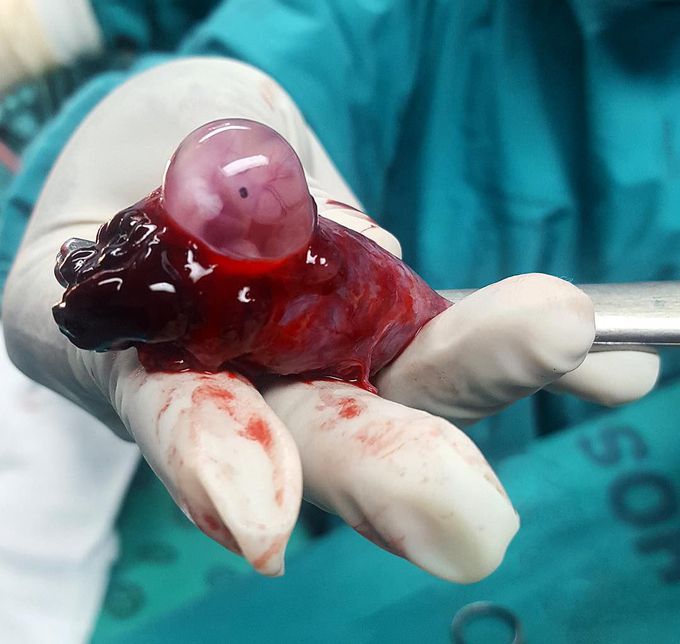


Left Fallopian tube with an ectopic pregnancy in a 25-year-old woman after salpingectomy!
This was a case of a tubal pregnancy, the most common variation of an ectopic pregnancy, where a fertilized egg implants in a fallopian tube rather than the uterus. Ectopic pregnancy is the result of a flaw in human reproductive physiology that allows the conceptus to implant and mature outside the endometrial cavity, which ultimately ends in the death of the fetus. Ectopic pregnancy is not an issue in the abortion debate simply because the Fallopian tube is uninhabitable for proper fetal growth. A ruptured ectopic pregnancy is one in which the fallopian tube gets torn or bursts and results in internal bleeding. The classic triad of symptoms is abdominal pain, amenorrhea (absence of menstruation), and vaginal bleeding. The pain may be described as sharp, dull, or crampy. Pain may also spread to the shoulder if bleeding into the abdomen has occurred. If bleeding has already occurred, surgical intervention is needed. An emergency surgery was done, and revealed an ectopic pregnancy which was connected to the fallopian tube. Surgeons gain access to the pelvis and can either incise the affected fallopian and remove only the pregnancy (salpingostomy) or remove the affected tube with the pregnancy (salpingectomy).


